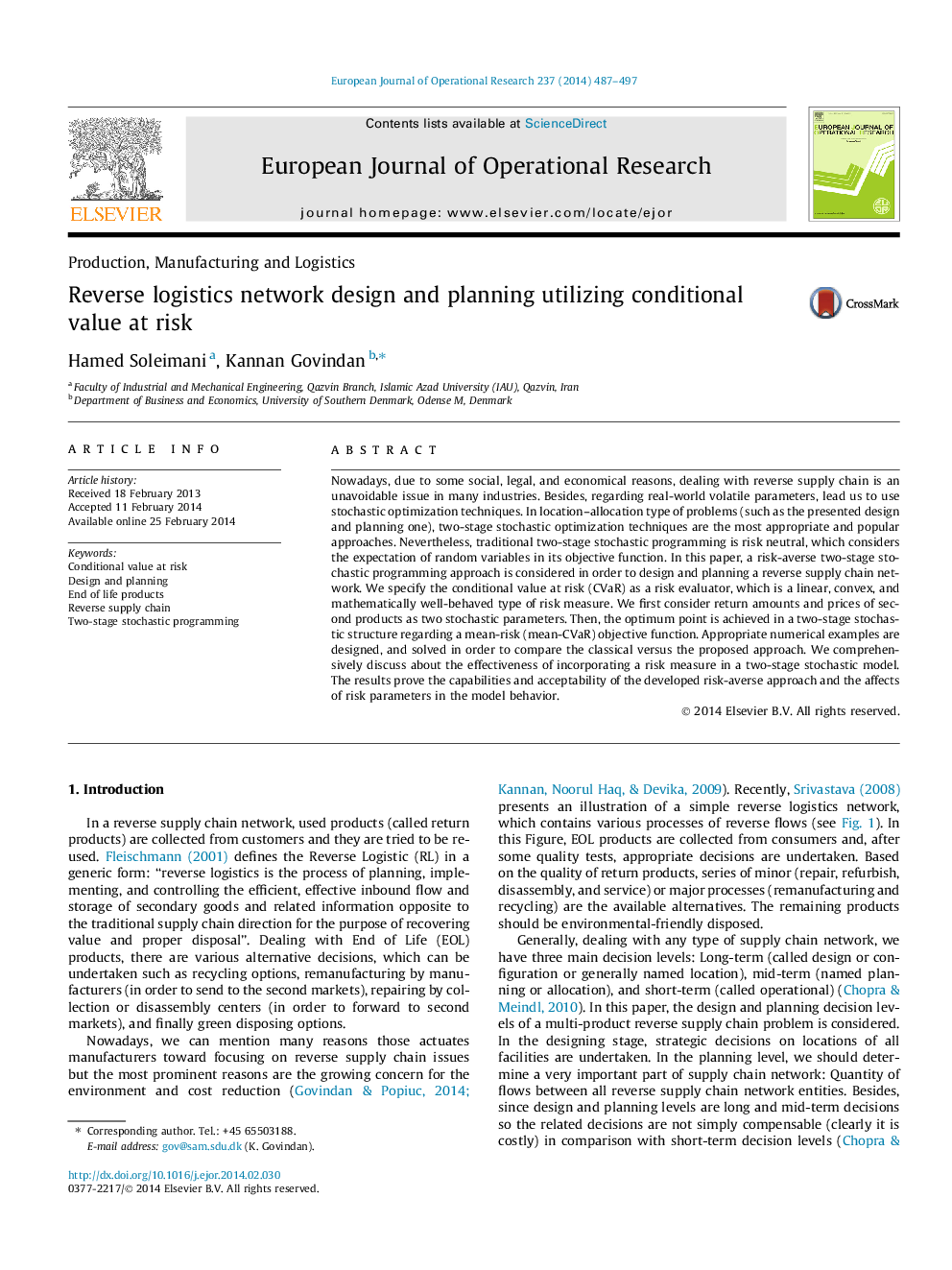| Article ID | Journal | Published Year | Pages | File Type |
|---|---|---|---|---|
| 478136 | European Journal of Operational Research | 2014 | 11 Pages |
•It is the first paper that tries to regard risk measure in reverse Supply Chain.•We specify CVaR as our risk measure in a two stage stochastic programming structure.•We consider stochastic demands and prices with a mean-CVaR objective.•Results show significant better performances for mean-CVaR models.•In real markets, managers can apply their risk factors via our mean-risk model.
Nowadays, due to some social, legal, and economical reasons, dealing with reverse supply chain is an unavoidable issue in many industries. Besides, regarding real-world volatile parameters, lead us to use stochastic optimization techniques. In location–allocation type of problems (such as the presented design and planning one), two-stage stochastic optimization techniques are the most appropriate and popular approaches. Nevertheless, traditional two-stage stochastic programming is risk neutral, which considers the expectation of random variables in its objective function. In this paper, a risk-averse two-stage stochastic programming approach is considered in order to design and planning a reverse supply chain network. We specify the conditional value at risk (CVaR) as a risk evaluator, which is a linear, convex, and mathematically well-behaved type of risk measure. We first consider return amounts and prices of second products as two stochastic parameters. Then, the optimum point is achieved in a two-stage stochastic structure regarding a mean-risk (mean-CVaR) objective function. Appropriate numerical examples are designed, and solved in order to compare the classical versus the proposed approach. We comprehensively discuss about the effectiveness of incorporating a risk measure in a two-stage stochastic model. The results prove the capabilities and acceptability of the developed risk-averse approach and the affects of risk parameters in the model behavior.
